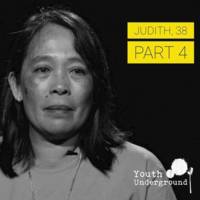
Judith
There are an estimated 403,000 people living in conditions of modern slavery in the United States (GSI 2018). The US attracts migrants and refugees who are particularly at risk of vulnerability to human trafficking. Trafficking victims often responding to fraudulent offers of employment in the US migrate willingly and are subsequently subjected to conditions of involuntary servitude in industries such as forced labour and commercial sexual exploitation. Judith travelled from the Philippines to New York in 2005 to work as a domestic worker. Instead of the eight-hour working day she was promised, Judith was forced to work up to eighteen hours a day, seven days a week for little pay. Her passport was confiscated, and she was told not to tell anyone about her situation. She was finally able to escape in 2007 while the family was out of the house.

Medina
There are an estimated 794,000 people living in conditions of modern slavery in Russia (GSI 2018). Forced labour remains the predominant form of human trafficking in the country. Many migrant workers experience exploitative labour conditions characteristic of trafficking cases, such as withholding of identity documents, non-payment for services rendered, physical abuse, lack of safety measures, or extremely poor living conditions. Women and children are also subjected to commercial sexual exploitation and sex trafficking in prostitution and pornography. Medina*, a 15-year-old girl from Kazakhstan was trafficked after being sold by her parents. The man who bought her forged her birth certificate and took her to Russia where she was forced to do domestic work and was subjected to sexual exploitation.
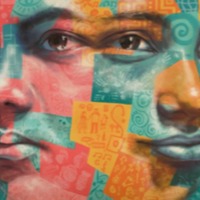
Melody
There are an estimated 136,000 people living on conditions of modern slavery in the United Kingdom (Global Slavery Index 2018). According to the 2017 annual figures provided by the National Crime Agency, 5, 145 potential victims of modern slavery were referred through the National Referral Mechanism in 2017, of whom 2,454 were female, 2688 were male and 3 were transgender, with 41% of all referrals being children at the time of exploitation. People are subjected to slavery in the UK in the form of domestic servitude, labour exploitation, organ harvesting and sexual exploitation, with the largest number of potential victims originating from Albania, China, Vietnam and Nigeria. This data however does not consider the unknown numbers of victims that are not reported. Melody was brought from Nigeria to the UK by a family friend at 12 years old. Upon arrival she was taken to a woman’s house where she was forced to clean every day for long hours under constant verbal abuse. This woman started bringing men to the house to sexually abuse Melody. Melody was kicked out of the house one day when she refused to sleep with one of the men the woman had brought to her. She spent months homeless on the street where she was subjected to further sexual violence. She was finally able to leave her situation with the help of an advisor from Refugee Council.
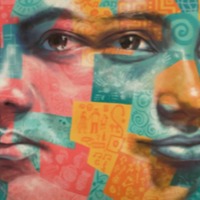
Grace
There are an estimated 136,000 people living on conditions of modern slavery in the United Kingdom (Global Slavery Index 2018). According to the 2017 annual figures provided by the National Crime Agency, 5, 145 potential victims of modern slavery were referred through the National Referral Mechanism in 2017, of whom 2,454 were female, 2688 were male and 3 were transgender, with 41% of all referrals being children at the time of exploitation. People are subjected to slavery in the UK in the form of domestic servitude, labour exploitation, organ harvesting and sexual exploitation, with the largest number of potential victims originating from Albania, China, Vietnam and Nigeria. This data however does not consider the unknown numbers of victims that are not reported. Grace was born in the Philippines then moved to the United Arab Emirates before travelling to London for work as a domestic worker. She was forced to work long hours with little rest and was subjected to physical and sexual abuse. After three years Grace ran away and was introduced to an organisation for domestic workers.
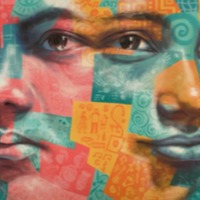
Rukmini
There are an estimated 136,000 people living on conditions of modern slavery in the United Kingdom (Global Slavery Index 2018). According to the 2017 annual figures provided by the National Crime Agency, 5, 145 potential victims of modern slavery were referred through the National Referral Mechanism in 2017, of whom 2,454 were female, 2688 were male and 3 were transgender, with 41% of all referrals being children at the time of exploitation. People are subjected to slavery in the UK in the form of domestic servitude, labour exploitation, organ harvesting and sexual exploitation, with the largest number of potential victims originating from Albania, China, Vietnam and Nigeria. This data however does not consider the unknown numbers of victims that are not reported. Rukmini was born in a village in India. When she was 18, she moved to Mumbai to find a job as a domestic worker and then came to London with the family she was working for. Upon arrival in London she was forced to work long hours with no days off. Rukmini wants to look for a new job and continue to learn English.
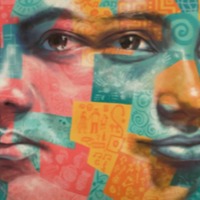
Stella
There are an estimated 136,000 people living on conditions of modern slavery in the United Kingdom (Global Slavery Index 2018). According to the 2017 annual figures provided by the National Crime Agency, 5, 145 potential victims of modern slavery were referred through the National Referral Mechanism in 2017, of whom 2,454 were female, 2688 were male and 3 were transgender, with 41% of all referrals being children at the time of exploitation. People are subjected to slavery in the UK in the form of domestic servitude, labour exploitation, organ harvesting and sexual exploitation, with the largest number of potential victims originating from Albania, China, Vietnam and Nigeria. This data however does not consider the unknown numbers of victims that are not reported. Stella travelled from the Philippines to the United Kingdom for work as a domestic worker. However, her labour was exploited, and she was physically abused by her employer.

Mila
There are an estimated 136,000 people living on conditions of modern slavery in the United Kingdom (Global Slavery Index 2018). According to the 2017 annual figures provided by the National Crime Agency, 5, 145 potential victims of modern slavery were referred through the National Referral Mechanism in 2017, of whom 2,454 were female, 2688 were male and 3 were transgender, with 41% of all referrals being children at the time of exploitation. People are subjected to slavery in the UK in the form of domestic servitude, labour exploitation, organ harvesting and sexual exploitation, with the largest number of potential victims originating from Albania, China, Vietnam and Nigeria. This data however does not consider the unknown numbers of victims that are not reported. Mila was born in the Philippines where she began working as a child. She travelled to the UK for employment as a domestic worker. Her labour was exploited. Mila had no freedom of movement and was subjected to abuse in her employer’s house. She is now living in the Philippines and no longer works as a domestic worker.
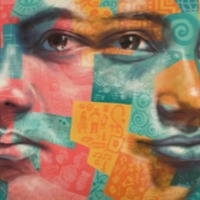
Miriam A.
There are an estimated 136,000 people living on conditions of modern slavery in the United Kingdom (Global Slavery Index 2018). According to the 2017 annual figures provided by the National Crime Agency, 5, 145 potential victims of modern slavery were referred through the National Referral Mechanism in 2017, of whom 2,454 were female, 2688 were male and 3 were transgender, with 41% of all referrals being children at the time of exploitation. People are subjected to slavery in the UK in the form of domestic servitude, labour exploitation, organ harvesting and sexual exploitation, with the largest number of potential victims originating from Albania, China, Vietnam and Nigeria. This data however does not consider the unknown numbers of victims that are not reported. Miriam A. was abused from a young age and into her marriage. She was offered the opportunity to come to Britain and start a new life away from abuse. She was promised the opportunity to study and that her children would join her later. Instead she was forced into domestic work, working 16 to 18 hours a day with no breaks. She was forced to do all cooking, cleaning, babysitting and care work. The family controlled when she slept, when she woke and what she ate. If she was allowed to speak to her children, her
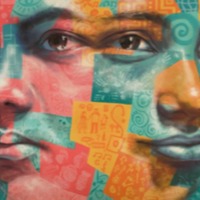
Sarah B
There are an estimated 136,000 people living on conditions of modern slavery in the United Kingdom (Global Slavery Index 2018). According to the 2017 annual figures provided by the National Crime Agency, 5, 145 potential victims of modern slavery were referred through the National Referral Mechanism in 2017, of whom 2,454 were female, 2688 were male and 3 were transgender, with 41% of all referrals being children at the time of exploitation. People are subjected to slavery in the UK in the form of domestic servitude, labour exploitation, organ harvesting and sexual exploitation, with the largest number of potential victims originating from Albania, China, Vietnam and Nigeria. This data however does not consider the unknown numbers of victims that are not reported. Sarah B was trafficked to the UK when she 12 years old. Sara was thrown out by her female employer when she was just 14, forced to live on the streets for 9 months. She eventually found help through ECPAT, an international group campaigning against child trafficking.

Esther A
Forced child labour remains a source of concern in Nigeria, according the International Labor Organization, the number of children working under the age of 14 in Nigeria is estimated at 15 million. These jobs include street vending, begging, car washing and shoe shining, while a large number of children work as domestic servants and farm hands. According to UNICEF, causes of child labour include widespread poverty, rapid urbanisation, breakdown in extended family affiliations, high school drop out rates and lack of enforcement of legal instruments meant to protect children. Esther was trafficked to Nigeria at 13 years old after her sister told her they were going on holiday. When she didn’t return, Plan Togo alerted the police to her disappearance and she was eventually rescued and returned home. Esther is now pursuing her dream of becoming a midwife.
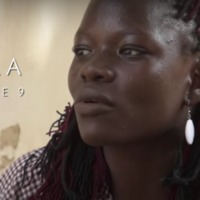
Bella
Forced child labour remains a source of concern in Nigeria. According the International Labor Organization, the number of children working under the age of 14 in Nigeria is estimated at 15 million. These jobs include street vending, begging, car washing and shoe shiners, while a large number work as domestic servants and farm hands. According to UNICEF, causes of child labour include widespread poverty, rapid urbanisation, breakdown in extended family affiliations, high school drop out rates and lack of enforcement of legal instruments meant to protect children. Bella was trafficked at 9 years old to Nigeria for domestic work. She was eventually helped by Plan International and is now learning to become a hairdresser.

Hanou
Forced child labour remains a source of concern in Nigeria, according the International Labor Organization, the number of children working under the age of 14 in Nigeria is estimated at 15 million. These jobs include street vending, begging, car washing and shoe shiners, while a large number work as domestic servants and farm hands. According to UNICEF, causes of child labour include widespread poverty, rapid urbanisation, breakdown in extended family affiliations, high school drop out rates and lack of enforcement of legal instruments meant to protect children. Hanou was trafficked at 9 years old when her parents sent her to Nigeria to work as a servant.

Natalicia Tracy
There are an estimated 57,700 people in modern slavery in the US according to GSI estimates. The US attracts migrants and refugees who are particularly at risk of vulnerability to human trafficking. Trafficking victims often responding to fraudulent offers of employment in the US migrate willingly and are subsequently subjected to conditions of involuntary servitude in industries such as forced labour and commercial sexual exploitation. Natalicia was working in Brazil when her employers invited her to come with them to Boston to care for their toddler. It was agreed that she would work for 2 years for $100 a month. However, upon arriving in the US Natalicia was made to do not just childcare but household work as well, working long hours with no rest. Natalicia developed asthma from inhaling cleaning products, however she was deprived of medical care. After 2 years, the family returned to Brazil, however Natalicia decided to stay in the US, finding work with another couple who she worked for, for 14 years

Judith Daluz
There are an estimated 57,700 people in modern slavery in the US according to GSI estimates. The US attracts migrants and refugees who are particularly at risk of vulnerability to human trafficking. Trafficking victims often responding to fraudulent offers of employment in the US migrate willingly and are subsequently subjected to conditions of involuntary servitude in industries such as forced labour and commercial sexual exploitation. In 2005 Judith was living in the Philippines when her sister told her about a job in New York working for a diplomat family. While her sister warned her that the advertised income was just for show, it was still more than Judith could make in the Philippines and she decided to go. Upon arrival, her passport was confiscated, she was forced to work 14 to 18 hours a day, seven days a week with no rest. Judith was deprived of food and subjected to verbal abuse. Judith finally escaped on July 26th 2007.

Nena Ruiz
There are an estimated 57,700 people in modern slavery in the US according to GSI estimates. The US attracts migrants and refugees who are particularly at risk of vulnerability to human trafficking. Trafficking victims often responding to fraudulent offers of employment in the US migrate willingly and are subsequently subjected to conditions of involuntary servitude in industries such as forced labour and commercial sexual exploitation. Nena Ruiz was in the Philippines struggling for money after her business partner stole all of her savings when her cousin told her about a job in the United States. She was told that she would be assisting her employer's elderly mother, however upon arrival in San Francisco, she was informed that she would be working as a domestic helper in Los Angeles. Nena was flown to L.A. and her passport was confiscated by her new employer. She was forced to work long hours with no rest and was subjected to physical abuse. Nena was finally able to escape her situation when her neighbours called the police.
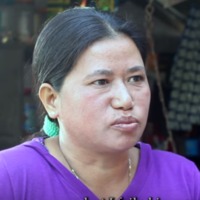
Mira
Lebanon is a destination for Asian and African women trafficked for the purpose of domestic servitude, and for women from Easter Europe for commercial sexual exploitation. There are estimated 200,000 migrant domestic workers in Lebanon and until 2012, Lebanon was the top country of destination for female migrant workers from Nepal. Women who travel to Lebanon legally to work as household servants often find themselves in conditions of forced labour through the withholding of passports, non-payment of wages, restrictions on movement, threat and physical of sexual assault. Mira decided to look abroad for work after her mother died. Her brother-in-law told her she could do housework in Lebanon and arranged for her travel. However, arrival her passport was taken and upon meeting her employer she learned that she would not be going housework but caring for their mentally ill mother. Unprepared and untrained for such a job, Mira was told she couldn’t leave until her employer’s mother died. She was forced to work in Lebanon for four years before she was allowed the return to Nepal.